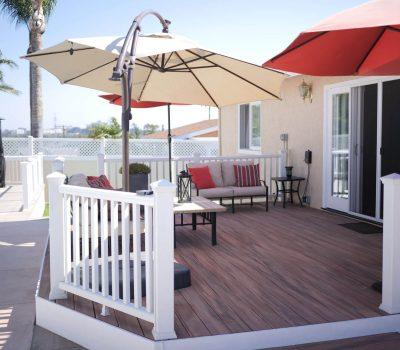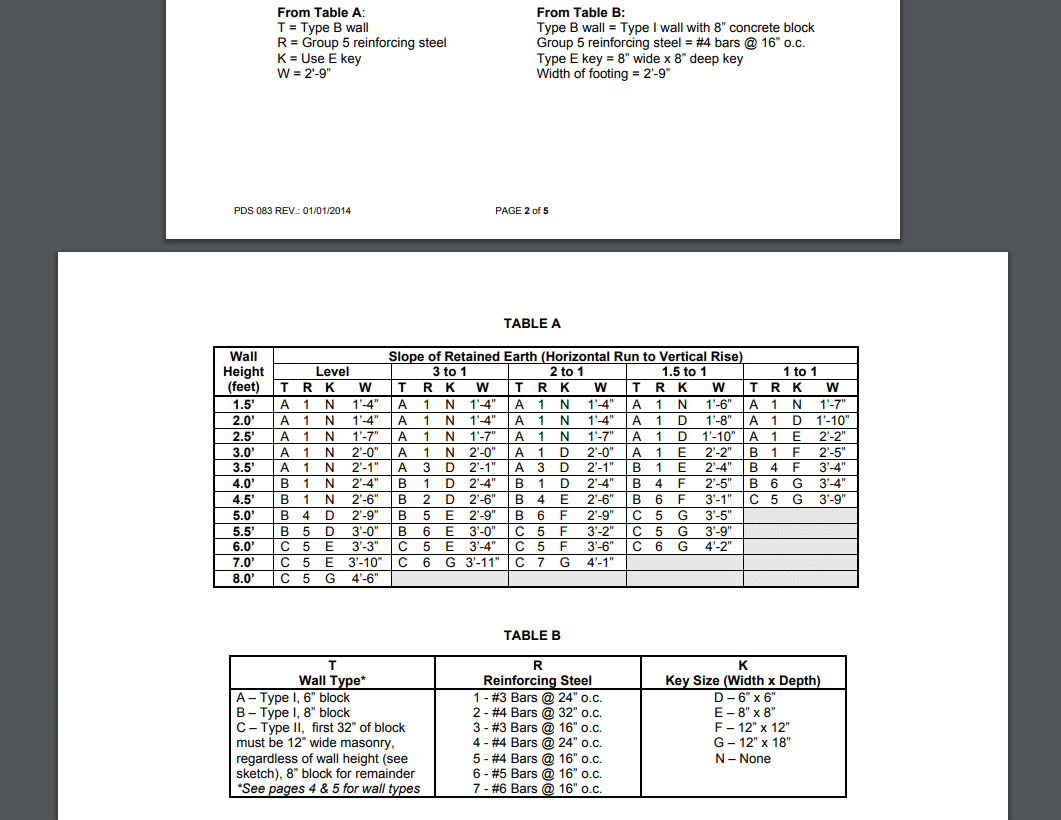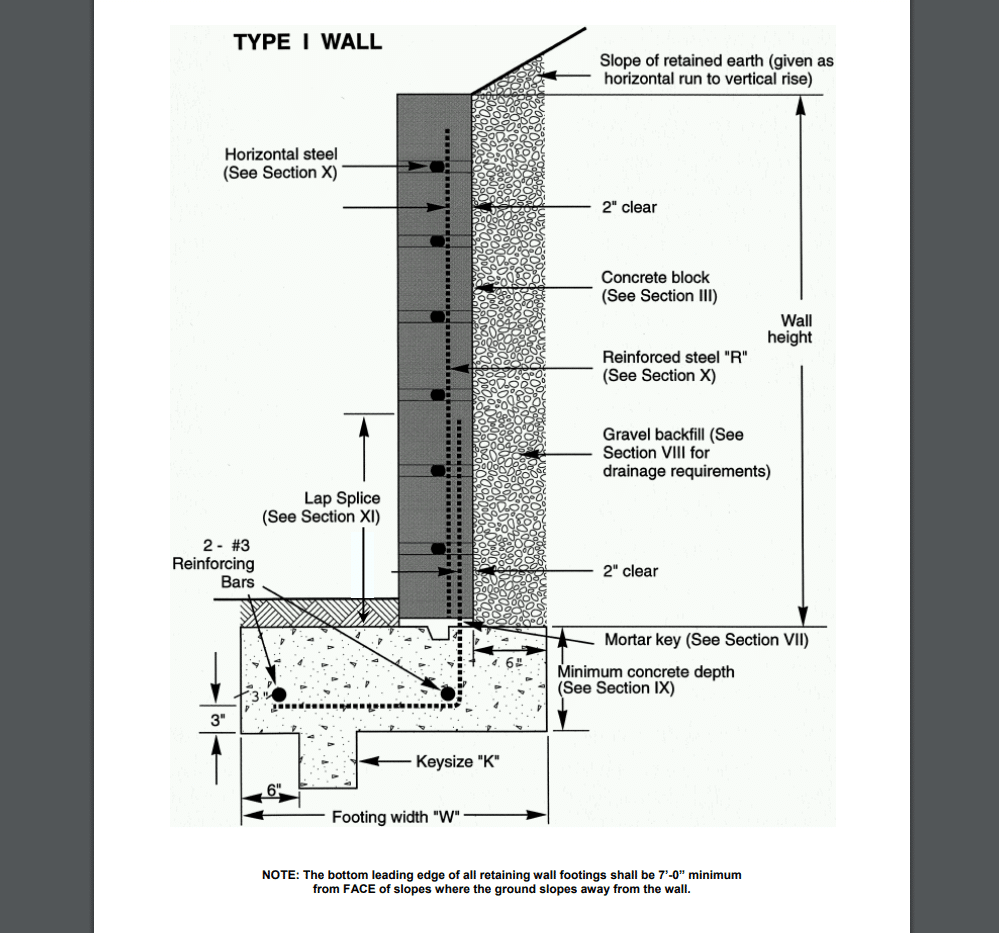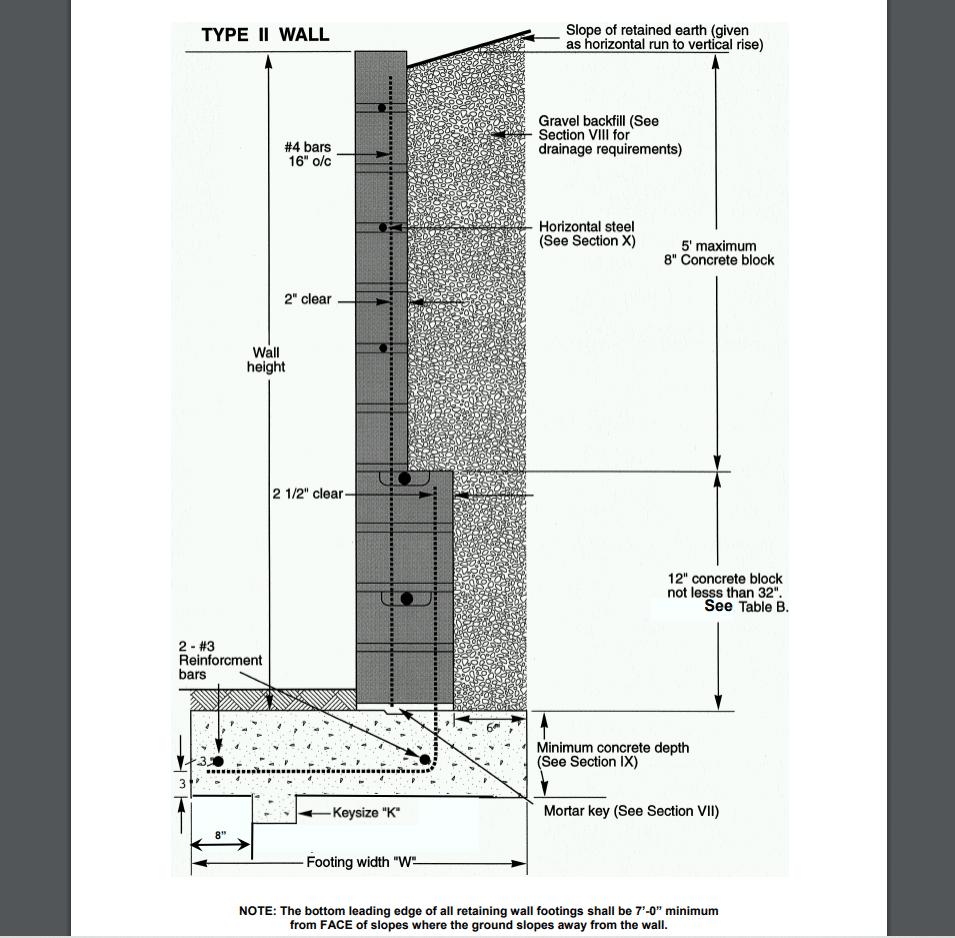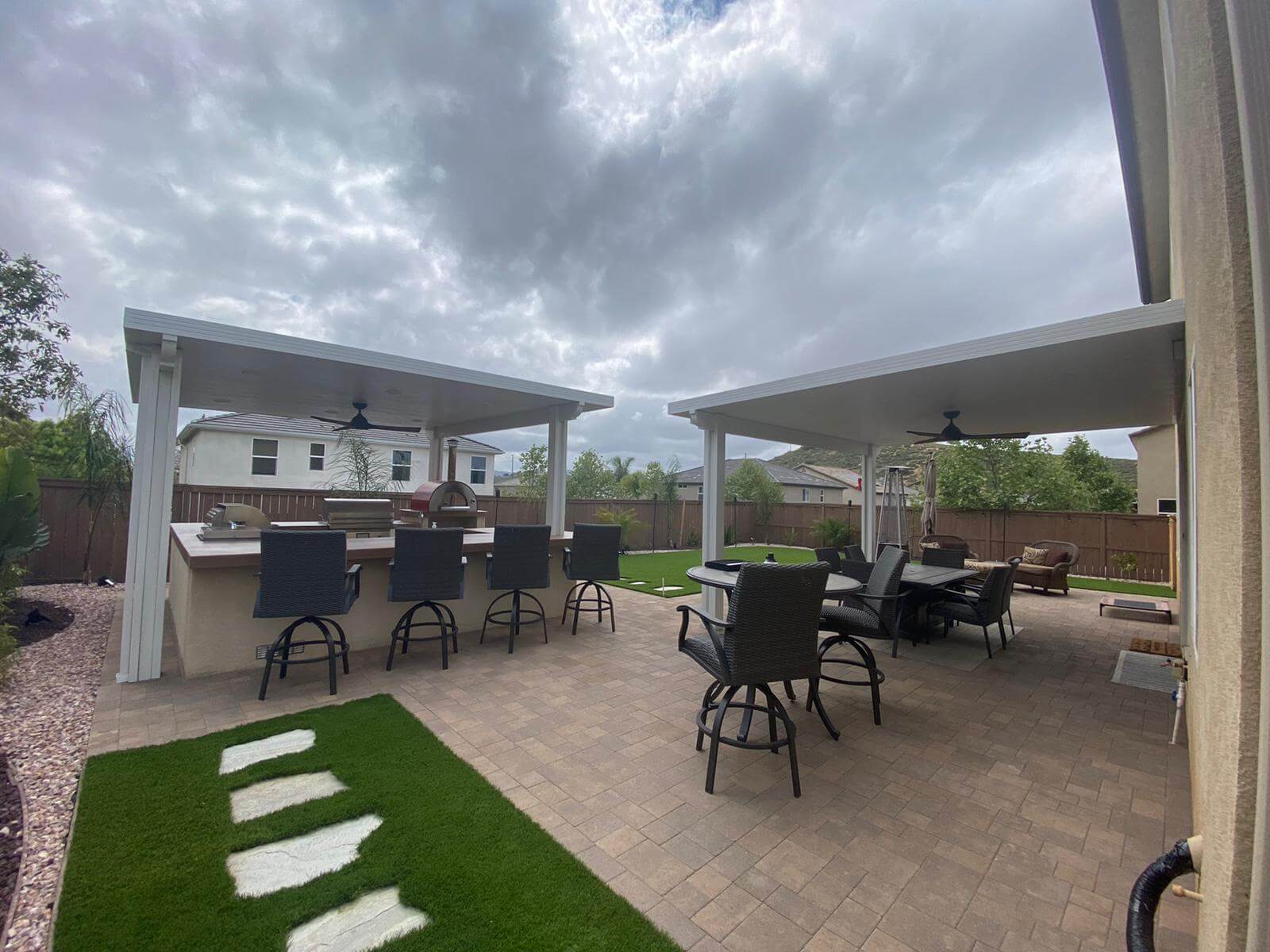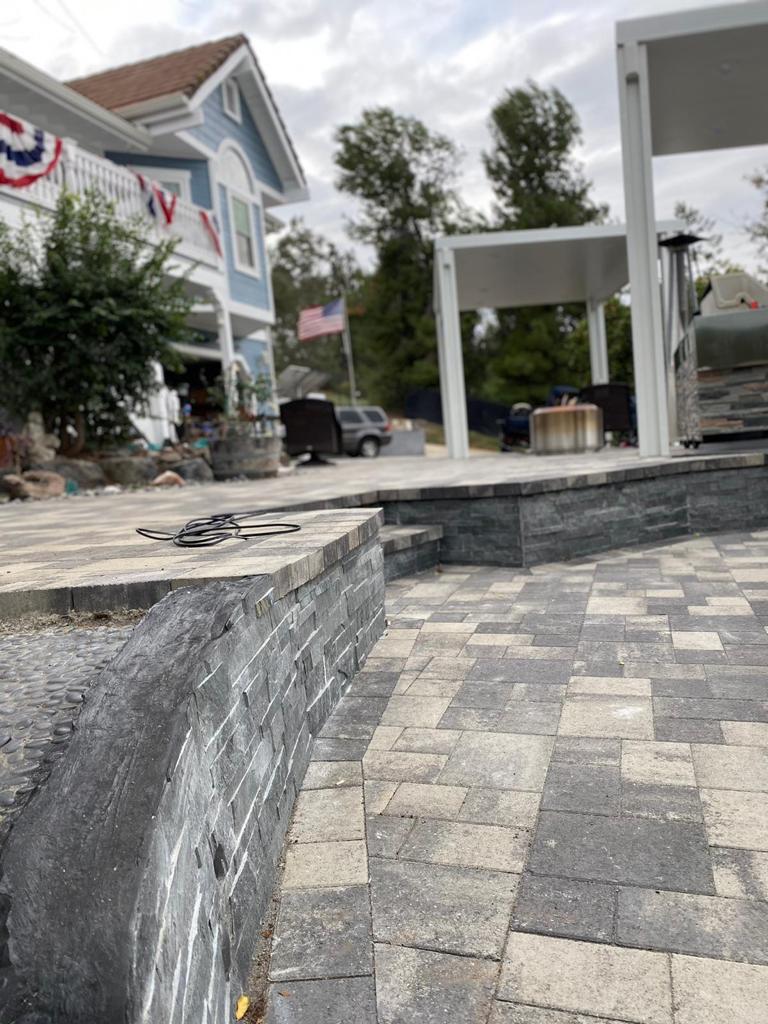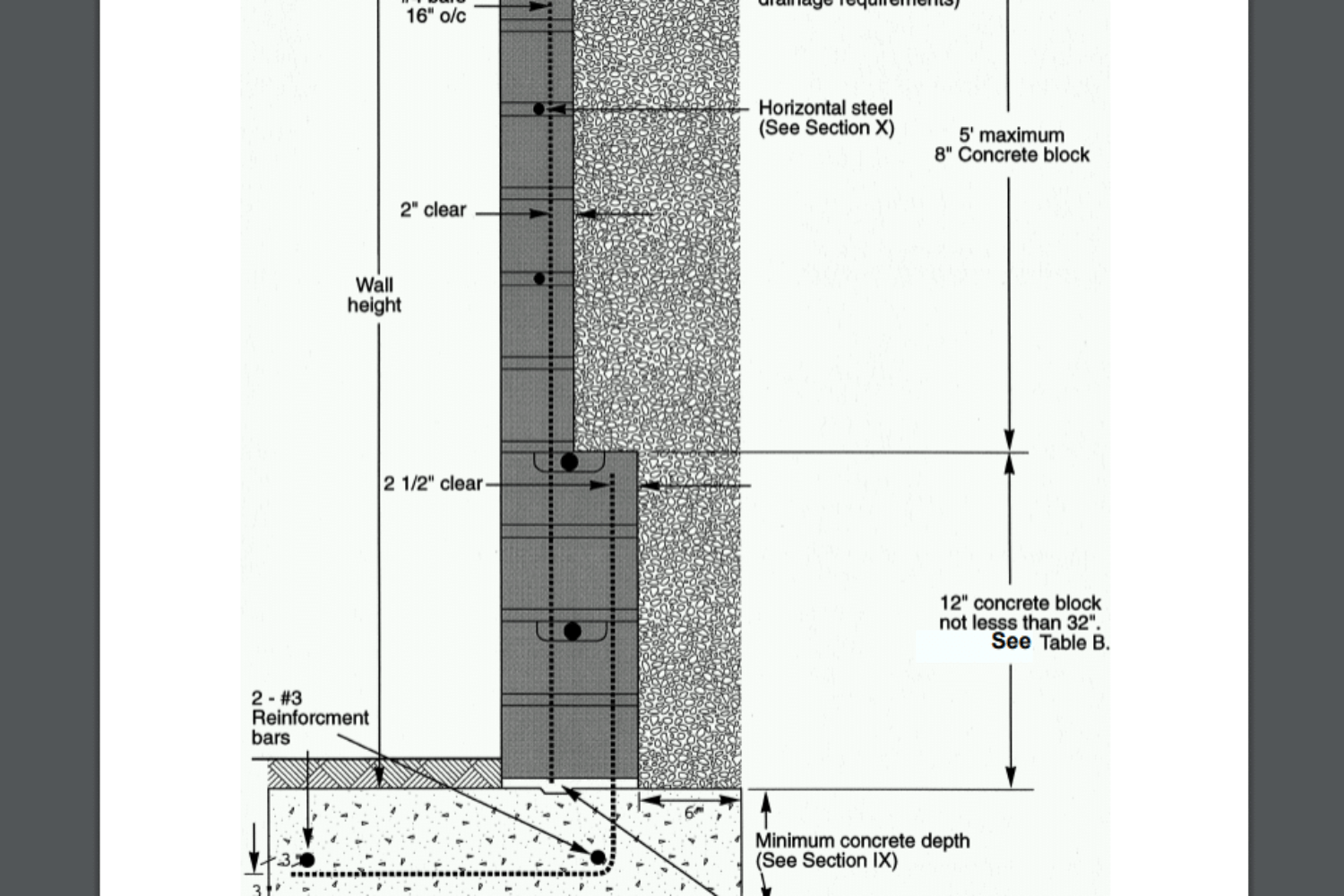
In San Diego County, it’s important to obtain a permit for many remodeling items, including retaining walls (also commonly known as “landscape walls”) The most common reason a retaining wall construction needs a permit in San Diego is likely the Retaining Wall Height. If your retaining wall is over 3 feet in height, measured from the top of the footing to the top of the wall, then you need to obtain a permit from San Diego city. Another common reason for retaining walls needing permitting is if they support a surcharge or impounding flammable liquid (surcharges include: walkways, driveways, structure footings, and similar)
From San Diego County.gov Website PDF on Retaining Walls with Sloping Backfill (download pdf here):
Construction of retaining walls, except those less than 3 feet in height and not supporting surcharge, requires a permit and is regulated by the 2013 California Building Code (CBC) as amended and adopted by the County of San Diego. This form outlines the County’s minimum requirements. The
companion form PDS #084 provides information on retaining walls with level backfill. For site retaining walls proposed to be constructed in a public way or associated with Department of Public Works grading, County of San Diego Regional Standards shall be used.
I. INSPECTIONS
Please call for inspections at the following times:
1. When the footing excavations have been completed, the reinforcing steel has been securely tied into final position, and before the placement of concrete.
2. When the block has been laid and the reinforcing steel is in position, but before any grout has been placed. Steel is to be securely fastened in place to prevent movement during grouting. Lifts are not to exceed 6 feet high and blocks are not to be laid higher than the grout pour.
3. After grouting is completed and after rock or rubble wall drains are in place, but before backfill is placed.
4. When all work has been completed.
II. WALL HEIGHT
Wall height is measured from the top of the footing to the top of the wall. Walls that are not specifically shown in this form must be designed by a California licensed architect, civil or structural engineer. No building foundation, driveway, parking or other loading on the upper level is allowed within a distance equal to the height of the wall. Walls with such loading must be designed by a California licensed architect, civil or structural engineer.
III. BLOCK
All concrete masonry unit blocks must be type “N” grouted solid with ƒ’m = 1,500 psi.
IV. CONCRETE MIX DESIGN
The concrete mix for footings must meet a minimum compressive strength of ƒ’c = 2,500 psi.
V. MORTAR MIX DESIGN
The mortar mix for block placement must meet a minimum compressive strength of 1,800 psi. Mortar shall conform to ASTM C 270 and articles 2.1 and 2.6 A of TMS 602 / ACI 530.1 / ASCE 6
NOTE: The use of plastic cement is not permitted for mortar.
VI. GROUT MIX DESIGN
Grout used for filling block cells must meet a minimum compressive strength of 2,000 psi and shall conform to CBC 2013 section 2103.13. Rod or vibrate grout immediately. Re-rod or revibrate grout about 10 minutes after pouring to ensure solid consolidation. Stop grout 2” from top of masonry units when an additional grout lift is required.
NOTE: The use of plastic cement is not permitted for grout.
PDS 083 REV.: 01/01/2014 PAGE 2 of 5
VII. MORTAR KEY
To insure proper bonding between the footing and the first course of block, a mortar key must be formed by embedding a flat 2”x4” flush with and at the top of the freshly poured footing. It should be removed after the concrete has started to harden (about one hour). A mortar key may be
omitted if the first course of block is set into fresh concrete when the footing is poured and a good bond is obtained.
VIII. WALL DRAINS
Wall drains, four inches diameter, must be places at 6 feet intervals along the length of the wall and located at the level of the bottom course of block. The drains may be formed by placing a block on its side at 6 feet intervals or by leaving out the mortar in the vertical spaces between all the blocks (head joint) in the first course. Backfill behind wall drains or open head joints must be gravel with a minimum thickness of 12 inches. Alternative drainage systems may be allowed, if approved by the plan check group of the County of San Diego, Planning & Development Services.
IX. SOILSAll footings must extend at least 12” into undisturbed natural soil or compacted fill which has
been compacted to at least 90% density. Soil should be dampened prior to placing concrete
footings. A soils report, compiled by a licensed engineer, may be required. Footing sizes given in
this handout are based on 1000 psf maximum soil bearing value; use of different bearing values
will require design by a licensed architect, civil or structural engineer specifically for the existing
conditions and may also require a soils report.
X. REINFORCING STEEL
Reinforcing steel must be deformed and comply with ASTM specification A615-85, Grade 40 or
60. When one continuous bar cannot be used, a lap or splice of 40 bar diameters is required.
Two #3 bars, minimum, must be placed longitudinally in the footing as shown. For 6” and 8”
blocks one #3 bar must be placed longitudinally in the center of the wall in a mortar joint every
16” as blocks are laid up. For 12” blocks one #4 bar must be placed longitudinally in the center of
the wall in a bond beam block course every 16” as blocks are laid up.
XI. USE OF TABLES – EXAMPLE
Specify the height of the wall required for site conditions and the slope of the retained earth.
Using Table A for appropriate wall height and slope of retained earth, determine T, R, K, and W
designations.
Example:
Given: Wall height = 5’-0”
Slope of earth retained = 3 horizontal to 1 vertical
From Table A: From Table B:
T = Type B wall Type B wall = Type I wall with 8” concrete block
R = Group 5 reinforcing steel Group 5 reinforcing steel = #4 bars @ 16” o.c.
K = Use E key Type E key = 8” wide x 8” deep key
W = 2′-9” Width of footing = 2’-9”
Click to enlarge images below:
In addition, some areas of San Diego County and surrounding have their own permitting regulations and “How to” guides, such as:
City of Santee Retaining Wall PDF
City of El Cajon Retaining Wall PDF
City of Carlsbad Retaining Wall PDF
If you’re thinking of building or replacing a retaining wall, be sure to get a free estimate from a licensed and insured retaining wall contractor in your area. If you’re in San Diego, we would love to help you!


